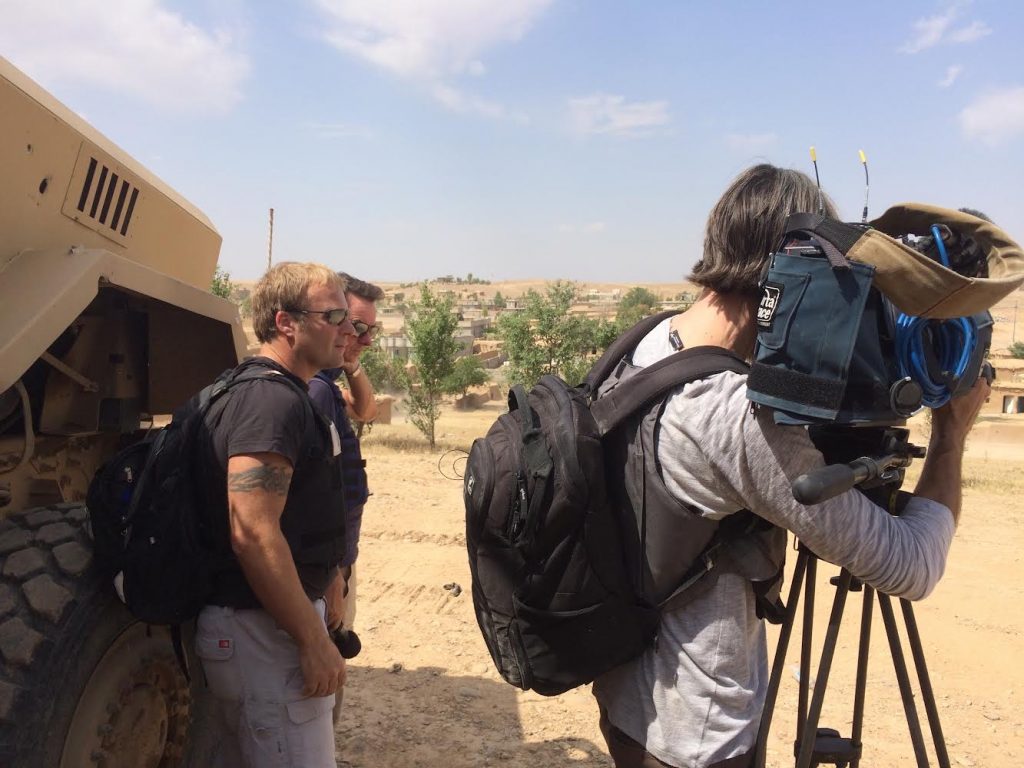Responding to the Demand
Since the Russian invasion of Ukraine, the threat is as high as it can get for News Teams, and if you are a well-trained Media Safety Advisor, the demand for your services has never been greater.
Over the last five years, the threat to journalists has increased dramatically. This is down to several factors, from the ‘fake news’ narratives, which have grown in prominence over the last 4-5 years, to the rise in online abuse and threats. In terms of career prospects, this has been a fortuitous time to be an established Media Safety advisor.
My first task as a Media Safety Advisor was in January 2010, supporting an American News Network covering the earthquake in Haiti. I quickly noticed the difference in the kind of security support and advice needed to support news teams. Many journalists I met on that task were highly experienced in Hostile Environments; most had recently been in Iraq & Afghanistan.
At that time, the only way to get into the media security industry was by word of mouth and personal recommendation, with the vast majority of Media Safety Advisors coming from the SF community. There were no courses that a would-be Media Safety Advisor could attend, and most of the job requirements needed to be figured out whilst on the ground. Needless to say, it took me some time and the help and advice of some extremely experienced and professional colleagues to gain the experience and knowledge that I now pass on to those entering the industry.
Media Safety Advisor – Career Benefits
Working within the media sphere offers the operative an unrivalled opportunity to travel the world and experience different environments and cultures, often witnessing first-hand moments in history by covering major events in world affairs such as the removal of dictators, changing of regimes, natural disasters as well as ongoing wars like Ukraine etc. It’s fast-paced and one part of the industry where the pay standards remain high.
Being deployed with a news team can be challenging; expect to be the primary medic, the military expert (know your weapon systems!), to be the logistics coordinator, in addition to being responsible for writing daily risk assessments that go to the very top of the news network for approval. You may even find yourself being the team chef! Often media teams work with very few resources.
Media Safety Advisor Training – Building on Experience
In 2021 during the pandemic, I designed and wrote a Media Safety Advisors Course. Once the Russian invasion started, the need for security with media increased overnight like nothing seen since the Arab Spring. Those with experience were booked up straight away by the networks. The shortage was evident. I rewrote the Advisors course based on the current situation and SOPs being developed in tune with the threat in Ukraine. Having just returned from a 6-week assignment with a leading International News Network and being one of the last teams to leave Mariupol, completing a deployment that saw several major incidents, I had gained invaluable insight into what was required of Media Safety Advisors in such chaotic, unpredictable and dangerous situations. I have incorporated the lessons I learned into the revised Media Safety Advisor Training course, which has now been delivered to over 150 operatives worldwide. Cosain is the only company within the industry to offer this unique niche training.
Setting Your Expectations
Media Safety Advisor assignments can vary in duration, some only a few days, such as the recent Champions League Final in Paris, during which we had a safety advisor on the ground with another major news and sports network, ensuring the safety of the news team in some difficult circumstances. Others, like the coverage in Ukraine, are longer and come with their own distinct challenges. The one constant is that news is a 24-hour, seven days a-week, 365 days-a-year industry, and, as such, the requirement for well-trained, competent and professional Media Safety Advisors is always there.
So, You Want to be a Media Safety Advisor?
From my experiences around the world with a wide variety of news teams over the last 12 years, the one piece of advice I would offer to anyone who wants to be a Media Safety Advisor is to keep a bag packed by the door at all times and be ready to move at a moments notice, breaking news waits for no one!!
Here are my top tips for anyone wanting to break into the diverse, complex and hugely rewarding world of the Media Safety Advisor:
1. Undertake a Media Safety Advisors Training course.
2. Ensure you have an in-date medical qualification (FREC3 is the standard, and FREC4 is particularly advantageous).
3. Keep your knowledge of weapon systems and military hardware up to date in, especially in any theatre of operations to which you may be deployed.
4. Be prepared to move at very short notice (breaking news waits for no one!!).
5. Maintain a calm character with a ‘can do’ attitude.
6. Stay proactive.
7. Keep up to date with current world affairs.
8. Stay fit; you will often carry spare camera equipment, body armour, and potentially a fully stocked trauma kit.
9. Have serviceable PPE (body armour, helmet, respirator as a minimum)
10. Have an IFAK & Trauma Kit
11. Carry two Passports
12. Have a sense of humour!
Media Safety Advisor Training
By Ken Perry, Cosain Consultancy
Cosain has over 25 years of experience within the media safety and executive protection industry and has a network of trusted relationships with global media companies across the globe. Services include crisis management, risk assessment, ground truth, rapid deployment and bespoke training for clients.
Cosain deliver the only Media Safety Advisor Training course available today that is based on extensive, operational experience, preparing the attendees for the varied and challenging demands of media safety.
For more information go to: www.cosainconsultancy.com
Or contact Ken directly at: ken.perry@cosainconsultancy.com


Leave a Reply